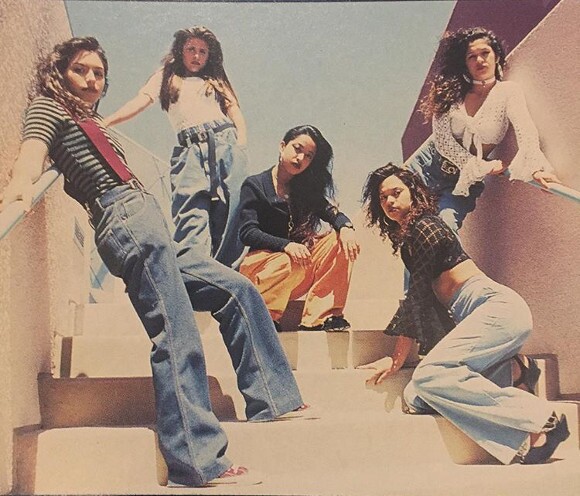Top Ten: The Most-Read Art Stories of 2016

As 2016 comes to a close, the Artbound team reflects and asks: "What can we learn from what took place this year?"
The arts have always been a central location for these deeper conversations.
Ranging from issues of identity to gentrification, this year, our most popular articles focused on the political dimensions of creative production. Times of uncertainty, followed by the 2016 presidential election, may not be ideal, but they can be productive — creating a sense of urgency that leads artists to realize important works. This sentiment will likely guide creative individuals into 2017. We'll be watching and examining.

1. Life After Mattress Girl: Emma Sulkowicz Reclaims Her Identity
Our most-read story details art piece “Self Portrait” by Emma Sulkowicz, aka Columbia University’s “Mattress Girl.” Her first solo show dove into topics of sexual violence, gender, and the role of art itself. Sulkowicz played on her notoriety by engaging with her audience in a live Q&A, but directed questions about her mattress performance onto the “Emmatron,” her android doppelganger. “Self-Portrait” implicitly engaged with criticism, rethinking the artist’s public identity through its fragmentation.

2. Veteranas and Rucas: Documenting 1990s Chicano Youth Culture
Guadalupe Rosales, the creator of Veteranas and Rucas, uses Instagram to document the underexposed 1990s Chicana/o subculture. Uploading nostalgic lo-fi images, she reflects on the importance of visibility for young Latinos and Latinas, as well as on the trauma of her youth. But these photos are not just aesthetically evocative. Rosales clarifies: "The archive is not just photographs, it's archiving language and the way we relate to a photograph."

3. How Juan Gabriel's 1993 Rose Bowl Performance Was Groundbreaking in Conservative California
Late Mexican singer Juan Gabriel played the Rose Bowl in the summer of 1993. It was billed as a benefit for his orphanage in Juárez, but the concert was a taking back of space — cultural, political, social — that Latinos had been denied.

4. She's Photographing Every Native American Tribe in the United States
Matika Wilbur has spent almost every day during the last four years traveling the United States, capturing images and stories of Native American peoples. Wilbur, herself a Swinomish and Tulalip tribal member, explains that she feels the duty to honestly represent indigenous people, especially given the stereotypical and dishonest portrayals that have been widely presented in history.

5. It's Opening in 2020, But You Can Preview Downtown L.A.'s Main Museum This Weekend
Scheduled to open in 2020, the Main Museum of Los Angeles Art will occupy three buildings in the heart of downtown's historic core. Founder Tom Gilmore and director Allison Agsten spoke with Artbound to elaborate on the unconventional views guiding all aspects of the Main, from its curatorial philosophy to its architecture.

6. This Family of Mexican Printmakers Changed the Art World
With their Mixografia Workshop, the Remba family has pioneered an innovative method of printing that blends image with sculpture, and they have also helped produce countless classic art works in the process. While the role of the Workshop was once unnoticed by the world at large, nearly 40 years after their beginnings, a Mixografia Gallery has opened, placing Mixografia in the spotlight.

In Boyle Heights, the opening of the PSSST gallery has generated pushback from local grassroots organizations. Residents are bringing into question the direct and indirect involvement of artists and cultural spaces in the displacement of communities.

8. Bethany Yellowtail Belongs to a New Generation of Native Designers Blending Tradition with Couture
Tribal designs have long been appropriated by the fashion industry, but Native American designers like Bethany Yellowtail are taking control of the conversation by authentically representing her story and the stories of her people.

9. Retro ‘Pee-Chee’ Folders are Re-envisioned to Memorialize Victims of Police Violence
Although Patrick Martinez doesn’t conceive of his art as explicitly political, it’s hard to deny the political reverberations of his re-imagined Pee-Chee folder creations. According to the artist, these works are historical records and tributes to victims of police violence.

10. Throat Singer Tanya Tagaq Loudly Combats Indigenous Stereotypes
In a wry artistic twist, celebrated Inuit throat singer Tanya Tagaq uses as her springboard “Nanook of the North,” a film that portrays stereotypes of indigenous people, for her latest performance. Tagaq also rethinks femininity, drawing on lessons from her cultural upbringing, breaking down the norms that have defined gender roles.
Dig this story? Sign up for our newsletter to get unique arts & culture stories and videos from across Southern California in your inbox. Also, follow Artbound on Facebook, Twitter, and Youtube.